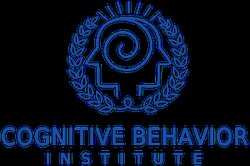Connecting with your negative emotions?
When you read that title, you may have thought to yourself: connect with my negative emotions? That sounds like a terrible idea! Who in their right mind would want to make friends with their shame, guilt, or anxiety when they could live a life of comfortable distraction? At first glance, it does seem crazy.
However, the problem with seeking out comfort is that we might be making ourselves more miserable without noticing it. Here’s why: Have you ever been in a pool or at the beach and attempted to push a beach ball below the surface of the water? It’s pretty tough, isn’t it? It would be especially difficult if we not only tried to push it under water but also tried to keep it underwater. It would take an almost constant effort. Now, imagine that you are trying hard not only to keep the beach ball below the surface of the water but also can’t stand to see the sight of a beach ball above the water. The fact that the beach ball is above the water makes you tremendously angry, anxious, or depressed. Think of resisting your negative emotions to be like trying to stuff the beach ball below the surface of the water. If we could learn to tolerate the beach ball just being on the surface of the water, we wouldn’t have to do all the extra work of pushing it down.
By resisting our frustration of the beach ball at the surface of the water, we suffer twice: we suffer by being anxious about the beach ball being at the surface of the water, and we also get exhausted by trying to get rid of the beach ball.
So, what if we learned that we can accept the presence of the beach ball, and stop resisting? Well, if you mastered this skill, you would still experience negative emotions, but would not experience the added suffering that comes from having emotions about the experience. In other words, you would simply experience negative emotions as they are, no more, no less.
That sounds easy enough! It may sound easy, but it is important to remember that we may be resisting without even knowing it. After all, it’s one of our brain’s jobs to try and distract us from unpleasant things. In order to ensure that we don’t resist, we need to do something counter-intuitive: we need to practice connection with ourselves and our negative emotions.
Again, the reason we connect with our negative emotions is so that we turn off the struggle switch (stop pushing down the beach ball), and learn to experience the emotion in its raw form, without strengthening it with our judgment of it. One simple exercise to improve our connection with self is to take a moment every day to slow down, breathe deeply and fully, and notice the sensations we experience during any pleasurable experience (we start with something pleasurable because it is easier to connect with). It can be anything we like to do, such as eating a meal, lay in the sun, listen to music, or pet an animal. Pay attention to what you smell, what you hear, feel, taste, and see during this experience. During this activity, your thoughts will inevitably pop in and distract you, and that is normal. Just simply say “thank you mind,” and continue to pay attention to your five senses.
Now you may be thinking, “I have connected with my positive emotions, and that is great. But what does that have to do with the whole point of this article: to connect with negative emotions so that we can better learn to stop resisting them?” That’s a great question, and to explain how the connection with pleasure can lead to acceptance of our negative emotions, let’s pay attention to your thoughts. They might bring a judgment about the thought too.
Whenever you get distracted by your thoughts, you might get frustrated. You may think, “ I will never learn how to better connect with myself.” Bingo. This is exactly what we were looking for in the first place: this thought is an example of the resistance that adds suffering to your experience. Good job! But now that you’ve connected with it, you do not need to let it control you in the same way anymore. By “thinking it” (literally saying the words “thank you” to the thought) and redirecting your experience to your sensations, you have already begun to build the muscle of connection with the moment. The more we do this, the more we build these muscles. The reason we have that thought is that this changes our attitude towards the thought, and we begin to restructure our resistance into acceptance.
You may have heard of exercises like this before under the general name of “mindfulness” or “meditation.” If this resonated with you and your experience, that’s wonderful. There are many resources to begin or continue to build a better connection with yourself through apps like “Waking Up,” and “Headspace.” This little exercise barely scratches the surface. It’s never too late to create a habit of connection, and I am sure that with practice, you can learn to live a life less controlled by overwhelming feelings, and more engaged in the present moment.
Still on the fence? The only way to be sure that it doesn’t work is to give it a try.
Check out any of these resources for future exploration:
Mindfulness, a meditation resource, just released content on Netflix:
https://www.netflix.com/title/81280926
Neuroscientist, philosopher, and author Sam Harris, and his “Waking Up” website:
For more information on these concepts, try reading The Happiness Trap, link here: https://www.amazon.com/Happiness-Trap-Struggling-Start-Living/dp/1590305841/ref=sr_1_1?dchild=1&keywords=the+happiness+trap&qid=1614771625&sr=8-1
Written by Michael Crosby using the principles of Acceptance and Commitment Therapy

